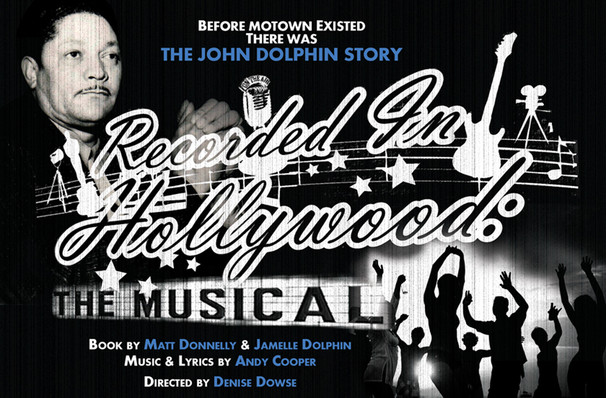
South-central L.A. was in its heyday from the 1920s through the mid-1950s, a vibrant Black ghetto whose 40-block main street, Central Avenue–known to locals as The Strip–was lined with nightclubs, theaters, bars and after-hours joints where such jazz musicians as Duke Ellington, Miles Davis, Art Tatum and Charlie Parker played red-hot jazz and blues every night.
In 1948, John Dolphin opened a combination record store and radio station at the corner of Vernon and Central. He called it Dolphin’s of Hollywood for a racially-motivated reason: the white landlords along Hollywood Boulevard refused to rent property to a Negro. So, he reasoned, if they won’t let me bring my people to Hollywood, I’ll bring Hollywood to them.
Dolphin’s of Hollywood soon became one of the most successful record-stores in the USA. Open 24 hours a day, 7 days a week, stocked with cutting-edge pop music (“buy one, get one free”), home to legendary DJs like “Huggy Boy” Hugg and Hunter Hancock who specialized in r&b formats and conducted on-air interviews with the likes of Sam Cooke, Jesse Belvin and B.B. King, Dolphin’s built a large and loyal clientele comprised mainly of young black, white and Latino kids who mixed together for the first time.
Now that little-known piece of L.A. history has been given new life in Recorded in Hollywood, a world-premiere musical which just opened at the Lillian Theater in Hollywood. Co-librettist and producer is Jamelle Dolphin, grandson of the legendary John Dolphin. He has not stinted on this family tribute: Recorded in Hollywood features an 18-person cast, a 4-piece band, and songs and dances galore, directed by Denise Dowse and Cassie Crump, respectively. Mylette Nora has also contributed some dazzling costumes.
Recorded in Hollywood is structured along strictly biographical lines: the story begins in Hollywood, where John Dolphin gets the cold shoulder from a white landlord, then it jumps to Vernon and Central and the opening of his shop, celebrated with an “I’m Gonna Make It” anthem (sung by Stu James, who plays John with fire and conviction). John’s romance with a beauty named Ruth (Jade Johnson) comes next, followed by his efforts to build a record company that will introduce such unknown but gifted r&B artists like Sam Cooke and Jesse Belvin (Godfrey Moye and John Deveraux, respectively) to the nation.
A big part of Recorded in Hollywood is devoted to John’s battle with the forces of racism and prejudice as embodied in the person of police chief William H. Parker (Philip Dean Lightstone), who took an increasingly belligerent attitude toward the boisterous inter-racial success of Dolphin’s store and went so far as to blockade it and turn white customers away with a warning, “It’s too dangerous to hang around Black neighborhoods.” He also roughed John Dolphin up and had him arrested on numerous occasions.
The people of south-central L.A., represented by the musical’s full cast, fight for John as best they can (via songs and dances), but their solidarity isn’t enough to save his life. Harassed by the authorities, tormented by his own demons (which cost him his marriage), John battled valiantly to keep his little empire going, only to be shot and killed by a disgruntled employee named Percy (Eric B. Anthony).
Recorded in Hollywood covers a vast amount of territory in a big hurry (one short scene follows another in rapid-fire fashion), but thanks to the thrilling efforts of the cast (which had to battle mike and lighting problems all night), the musical must be counted as a success. The score, by the way, includes 16 original songs by Andy Cooper, plus covers of such hit songs launched by John as Sam Cooke’s “You Send Me,” The Penguins’ “Earth Angel” and “Wheel of Fortune” by The Hollywood Flames. A rap song and an ensemble number, “Havin’ a Party,” conclude the long but worthy and entertaining night.
